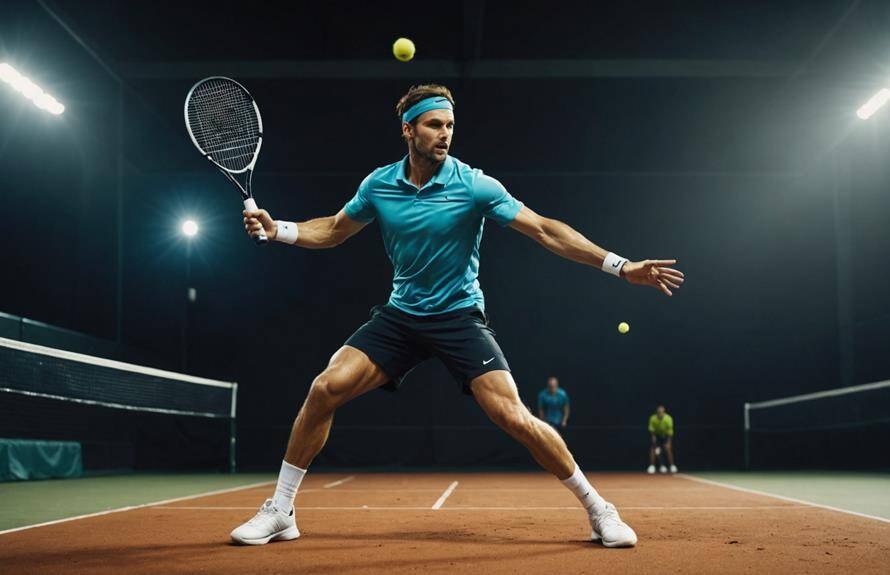Choosing the right padel racket is crucial for maximising your gameplay.
The Best Padel Rackets of 2024
Start with the core material: foam-based for comfort or harder cores for power.
Set your budget, ensuring quality aligns with your expenditure.
Prioritise a reliable grip to maintain control and reduce slippage.
Choose the appropriate weight; lighter rackets offer manoeuvrability while heavier ones impart power.
Finally, evaluate the racket shape—round for beginners, diamond for advanced players, and teardrop for intermediates.
Each of these elements influences your performance, so understanding their impact will enhance your selection process and playing experience.
Discover detailed insights to perfect your choice further.
Key Takeaways
- Core Material: Select a core material that matches your skill level; softer for beginners and harder for advanced players.
- Price Range: Align your budget with your skill level; beginner rackets cost £50-£100, professional models up to £250.
- Grip Quality: Choose a racket with a moisture-absorbing, ergonomic grip for optimal control and comfort during play.
- Weight Selection: Match the racket’s weight to your strength and playing style; lighter for manoeuvrability, heavier for power.
Check the Material
When selecting a padel racket, evaluating the material is essential for ensuring optimal performance and durability. High-quality materials significantly impact the racket’s effectiveness.
Typically, the core material is foam, which influences the racket’s hardness and thickness. For beginners, softer rackets are advantageous as they facilitate easier speed generation and offer greater comfort. This softness often translates to reduced pain and strain during play.
Conversely, advanced players might prefer harder rackets, which enable more powerful and precise strikes. Consequently, understanding the material composition and its implications on play style is critical.
The right material choice can enhance a player’s overall experience, providing the necessary balance between comfort and performance tailored to their skill level.
Consider the Price
In addition to material considerations, evaluating the price of a padel racket is paramount for making an informed purchase.
Racket prices vary greatly based on brand and quality, with beginner models typically ranging from £50 to £100. Professional-grade rackets, designed for advanced players, can reach prices around £250.
Affordable options are available at online retailers such as Padel USA. Popular brands, including Head, Bullpadel, Babolat, Adidas, Nox, and Wilson, offer a wide range of choices to suit different budgets and performance needs.
Balancing cost with the racket’s features and your playing level is essential for ensuring you make a worthwhile investment without compromising on quality.
Ensure a Firm Grip
A solid grip is essential for optimising your performance on the padel court. Ensuring your racket has a firm and comfortable grip can greatly enhance your playing experience.
Look for rackets designed to absorb moisture, which helps prevent slippage caused by sweat. A proper grip allows for better control of the racket, improving your shots and overall gameplay.
Conversely, a poor grip can lead to reduced enjoyment and lost points, as it hampers your ability to manoeuvre effectively. Prioritising a racket with an ergonomic and non-slip grip will contribute to maintaining control and consistency during intense matches, ultimately elevating your performance and enjoyment of the sport.
Choose the Right Weight
Selecting the appropriate weight for your padel racket is essential for balancing control and power in your gameplay.
Lighter rackets, typically weighing 350-360 grams for women and 240-280 grams for children, are favoured for their enhanced manoeuvrability and control, allowing for quicker reactions and precision shots.
Heavier rackets, preferred by many adult men, provide increased power, enabling more forceful and aggressive strokes.
The ideal weight of a racket should align with the player’s strength and playing style, ensuring peak performance on the court.
Carefully considering the racket’s weight can greatly impact your ability to maintain control during fast-paced rallies and deliver powerful shots when needed, ultimately enhancing your overall padel experience.
Evaluate Racket Shape
Understanding the different racket shapes is essential for optimising your padel performance. Racket shapes generally fall into three categories: round, diamond, and teardrop.
Round-shaped rackets offer a larger sweet spot, making them ideal for beginners who prioritise control and accuracy.
Diamond-shaped rackets provide a smaller sweet spot and are geared towards advanced players seeking powerful shots and aggressive play.
The teardrop shape strikes a balance between power and control, making it suitable for intermediate players.
Each shape affects the racket’s balance, with round rackets being more evenly balanced, diamond rackets head-heavy, and teardrop rackets somewhere in between.
Selecting the appropriate shape aligns the racket’s attributes with your skill level and playing style, enhancing your overall game performance.
Conclusion
In summary, selecting an ideal padel racket necessitates a thorough evaluation of material quality, price range, grip firmness, and suitable weight.
These key factors collectively influence performance and comfort on the court.
By making informed decisions based on these criteria, players can enhance their gameplay and guarantee a better match to their skill level and playing style.
This guide provides the foundational knowledge required to make such a critical choice, ultimately contributing to improved performance and enjoyment in padel.



